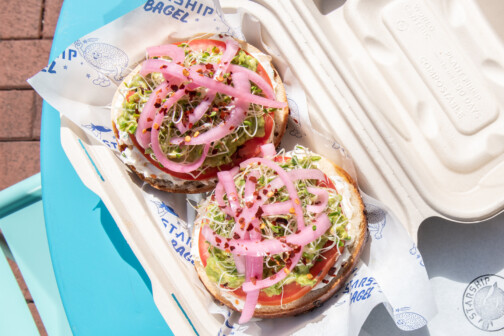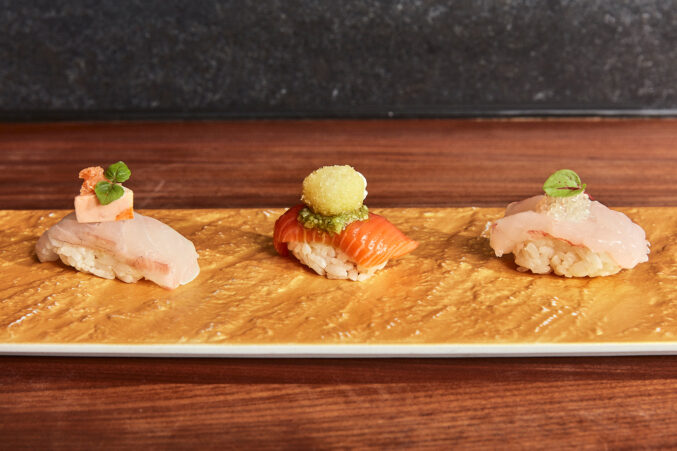Last week, a pair of blockbuster articles described two opposite ends of the Dallas dining scene. One of them was about a startup business that opened with limited resources and a shoestring budget in a suburban strip mall, then went on to win a national award for the excellence of its product. The other was about a new business that opened with the backing of several multimillionaires, who lavished $11.5 million on an ultra-luxurious building that went on to win a global award for its prettiness—while the food served inside is worthless.
The first was my feature about the delicious rise of Starship Bagel. The second was Dallas Morning News writer Sarah Blaskovich’s deep dive into the astonishing construction expenses at The Mexican. To be clear, these stories are not actually connected. Neither restaurateur would, I’m sure, want to compare themselves to the other’s work. I don’t want to get either of them (or Blaskovich) in trouble by choosing to make this comparison.
But it is easy to see how these stories intersect—and how they, taken together, paint a picture of the fundamental duality at the root of Dallas dining culture. Heck, Dallas culture as a whole. Our city keeps repeatedly facing the same choice: undertake the hard, boring daily grind required to improve, or spend a whole bunch of money to make something unsatisfying look nice.
The Morning News article subtly pushes back on that dichotomy by keeping The Mexican’s negative reviews lassoed into one sentence, along with a reminder that, despite those reviews, it does truly enormous sales numbers. But the story mostly focuses on the eye-bulging costs associated with the restaurant’s buildout. The Mexican spent $100,000 on wallpaper alone. Artwork, from one owner’s personal collection, is valued at $90,000. Excluding its patio, The Mexican came in at $1,045 per square foot.
The article compares The Mexican’s costs to the not-quite-as-expensive buildouts at Fearing’s and Dee Lincoln Prime, but I wanted more context. I wanted to know how The Mexican compares to, you know, a normal restaurant. Or a good one. After some Google searching, I found a $566 per square foot estimate for an upcoming new-build Dallas location of a national chain. Renovations are much cheaper.
Last fall a prominent food industry pro, who has opened about a half-dozen restaurants here and others out of town, told me about how young chefs could open acclaimed new restaurants in other cities with an initial investment of just $75,000.
Talking about young chefs struggling to make the leap into owning their own businesses, this restaurateur told me, “A lot of them just cannot afford it. At 28 years old, you cannot afford $400,000 and not being sure you can make money out of it.”
Judging from the figures in the News article, $400,000 is about 3.5 percent of what it cost to build The Mexican. The next time that a talented youngster with a new idea tells me they can’t find a way to keep their tiny restaurant open, or that they are probably going to open a food truck or move to Nashville instead of trying to lease a building, I’ll think about what they could do with $11.5 million. Chefs are thinking about that too. One well-known Mexican-American restaurateur called me, off the record, when The Mexican opened, to complain about how much better that caller could do—and how much they could achieve with the money.

In a way, though, the money isn’t the point. The priorities are. That’s the real contrast between Starship Bagel, a passion-driven project that got its start boiling bagels in a repurposed deep fryer, and The Mexican, which uses grocery brand Maseca for the tortillas served in its ornate dining room.
This leads to an existential question. How do you measure success? Do you measure it by profit alone? Are looks important to you? When I spent time with bagel baker Oren Salomon, it was obvious that he is as heartened as anyone else by external validation—by the awards his bagels have won, even by the feature we published. But it was also obvious that if the acclaim wasn’t there, if nobody else cared at all, he’d still want to keep making better and better bagels, tweaking his recipe, upgrading his equipment. The guy really cares about bagels.
He also really cares about improvement. Self-improvement, recipe improvement, making Dallas a better city, all of it. When his bagels won the big prize at New York BagelFest, he responded with a comment I’ve thought about a lot in the months since: “There is no feeling of being the best. There is only a feeling of wanting to do better.”
In my feature, I twisted that statement somewhat to be more about our city and its identity crisis: “Dallas often chases the feeling of being the best rather than cultivating the feeling of wanting to do better.”
I didn’t imagine a perfect illustration of that point would appear in the news so quickly. What else can you say about a restaurant that spends $100,000 on its wallpaper but douses its food in artificially-flavored truffle oil, except that it chases the feeling of being the best rather than cultivating the feeling of wanting to do better?
Read the two articles back-to-back if you want to understand this duality. One of them is a distillation of the old-school, big-money, stereotypically flashy Dallas mentality—and the other one shows what is possible when we leave that mentality behind.
Author







